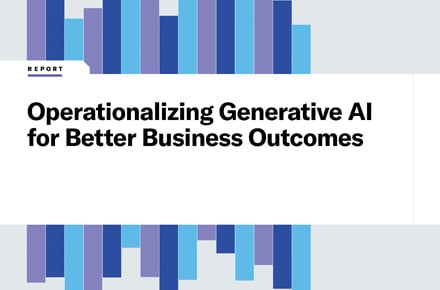
Short on time? Read the key takeaways:
- The traditional field services model, where a field engineer visits the user to diagnose and repair issues, is becoming ineffective in today's hybrid and flexible work models.
- Nine forces are currently impacting the field services industry, including device reliability, device management processes, remote diagnostic and repair tools, cost reduction pressures, ITIL processes modernization, user expectation for speedy resolution, physical workplace complexity, personalization of the end-user experience, and workplace device complexity.
- These forces call for a reimagining of field services to provide a superior end-user experience while reducing costs and increasing productivity.
The traditional field services model can be summed up in seven words: “Something’s wrong. Come fix it in person.”
In response, a highly technical field engineer would go to the user, diagnose, repair or replace as necessary, and leave. That in-person field engineering support model is becoming increasingly ineffective, especially given today’s hybrid and flexible work models.
Multiple forces are pushing and pulling at business, compelling a reimagination of field services. Understanding what these forces are and how they change the nature of field services is critical if businesses are to provide users with a positive, convenient experience that reduces their cost of support and increases productivity.
This article examines the nine forces that affect field services and then dives into how you can reimagine field services to be more effective in today’s hybrid and flexible work models.
Nine forces impacting field services
Nine major forces currently at play in the market, business and technology affect the demand for in-person field engineering support and call for a reimagining of field services.
1. Device reliability REDUCES demand for in-person support. Devices are far more reliable today than before because of operating system stability and reduction in moving parts. When a device does break, it is often exchanged for a new device rather than fixed. Couple this with modern device management processes where users can provision a new device over the air on their own, decreasing in-person support requirements.
2. Device management processes REDUCE demand for in-person support. Historically, much of field support dealt with software needs. Tasks such as updating software, upgrading the OS and swapping out devices as part of a PC refresh program were manually intensive procedures. Field engineers needed to be physically present to install apps, perform backups, take care of imaging, etc.
That has changed with modern device management processes. Modern device management enables cloud-based delivery of apps and data backup in the cloud. The end user can now handle this entirely, eliminating the need for field engineer involvement.
3. Remote diagnostic and repair tools REDUCE demand for in-person support. Obviously, there are plenty of problems that users cannot fix on their own. In the past, a technician often needed to be on-site to determine whether an issue was related to the PC, the network, the router, etc. Today, it is getting increasingly easier to diagnose and fix problems remotely. Even if a technician cannot connect to a PC for a screen share, virtual technologies, such as merged reality, enable support staff to remediate issues without being physically present with the end user.
4. Pressures for cost reduction REDUCE demand for in-person support. The most expensive part of IT support is in-person field services, particularly dispatch support, which includes the cost and time of travel. As businesses seek to tighten budgets, combining a re-design for the support process and modern device management tooling makes cost reductions readily achievable.
5. The modernization of the Information Technology Infrastructure Library (ITIL) processes REDUCES demand for in-person support. When a business has an immature support process, it is common for field engineers to be dispatched to fix problems that could have been resolved remotely. The modernization of ITIL processes reduces these unnecessary on-site visits by accurately identifying when problems can be resolved remotely versus when in-person support is truly called for.
6. User expectation for speedy resolution REDUCES demand for in-person support. Many users do not want to waste time scheduling or waiting for in-person support. They expect to fix it fast. They want remote support, and if that support can detect and prevent problems from occurring in the first place, that is even better.
7. Physical workplace complexity INCREASES demand for in-person support. Smart buildings, smart conference rooms, the Internet of Things (IoT), the increase in biometrics and more have created a volume of opportunities that require physical touch. Installations, repairs and replacements often cannot be accomplished remotely but necessitate physical solutions.
8. Personalization of the end-user experience INCREASES demand for in-person support. Although many users prefer remote support or self-service options, some consider in-person support a business perk. These users expect a white-glove treatment with professional, in-person field technician services if they encounter IT issues. Certain business roles benefit from in-person support because the cost of downtime for that role using less-effective remote support justifies the higher cost of in-person support.
9. Workplace device complexity INCREASES demand for in-person support. The device ecosystem is becoming increasingly complex. Users engage with multiple device types, including desktops, notebooks, tablets and smartphones. These devices rely on multiple operating systems and are loaded with endless applications. There are times when users simply want personal one-on-one help getting their digital assets in order so they can work at maximum productivity.
Reimagining field services
The combined effect of these nine forces does not eliminate the need for in-person field engineering support; instead, it calls for reimagining field services. The objective of such a reimagining is to provide a superior end-user experience that raises workplace productivity on emerging technologies while eliminating the need for unnecessary in-person field engineering support and its associated costs.
With that goal in mind, organizations should evaluate their field services strategy in the context of broader benefits and capabilities, including:
- Leveraging remote diagnostic and remediation tools. Digital experience, application and device performance and analytics-based monitoring tools empower field engineers to do their work without physically traveling to an end user’s location. Fewer in-person visits lower overall support costs.
- Gaining consistency and cost savings through badged employees. Many providers use subcontractors to perform field support — it is not uncommon to have three or four layers of subcontracting taking place. This results in margin stacking and price pressure and impacts consistency and quality. A provider who uses their own badged employees eliminates these costs and concerns.
- Driving value through artificial intelligence (AI). Through AI, routine support tasks can be automated, eliminating the need for manual processes. AI can also predict and prevent issues from occurring. Additionally, AI can help field engineers be more efficient in addressing the issues that do require human intervention.
- Upskilling field engineers to broaden their expertise. It is imperative to have support personnel skilled in handling a wide array of devices: not only computers and mobile devices but also modern conference room equipment, scanners, sensors, cameras, biometrics and the like. Plus, field engineers should be equipped to work with complex IoT systems, smart buildings and other modern workplace systems.
- Delivering a consumer-like experience. Today’s workers want to be able to interact with field services through modern media tools (Microsoft Teams, Yammer, Slack and mobile apps), track the status of their IT ticket and the arrival of a field engineer and share information via mobile devices or the cloud to eliminate wasted time.
- Offering Virtual Tech Cafés. A Virtual Tech Café reduces the demand for expensive in-person dispatches. Virtual Tech Cafés equipped with merged reality help bridge the gap between the ability of end users to self-serve and their need for remote guidance and expertise from field engineers.
- Enhancing the productivity of end users. In the reimagined field services model, field engineers do not work solely with hardware and software. Engineers also work with people to ensure that the hardware and software are used to their greatest potential, such as by helping an end user navigate an application more efficiently, on-the-spot tips and training.
- Providing options that prioritize the business. Field services do not always involve in-person support. For instance, a provider can offer smart lockers. If a device fails, the user can swap it at a locker for a new one. Or even for a highly distributed workforce, like field sales, advanced replacement via an overnight depot shipping service. Options such as these allow an immediate return to productivity and keep business operations flowing smoothly.
Ultimately, a reimagined field services model embodies a holistic understanding of the digital workplace ecosystem and all required for superior support experience — not just of the hardware and software, but of the users and the business. By partnering with a provider who offers such a field services model, businesses can successfully reduce both cost and complexity while simultaneously enhancing productivity and ensuring a great experience for their workers.

















